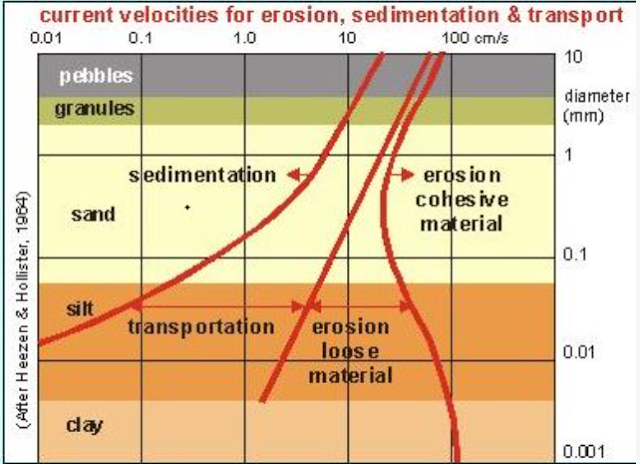Written by the TreasureGuide for the exclusive use of the Treasure Beaches Report.
 |
JamminJack has been on the Treasure Coast for a couple weeks or so and has been providing beach photos. That has been helpful.
In these photos, taken by Jack Saturday, you can see a bit of the history of the beaches. Above you can see where the beach eroded when the surf was higher. Unfortunately we didn't have good high tides to go along with the higher surf and the water didn't get back to the dunes in a lot of places.
In these pictures you can see where the sand has filled in again since the erosion. You can also see the seaweed, which is what you will often see when the beach is building. Since the surf has decreased the water isn't getting as far back as it did when the area eroded.
In the above photo you can see a convex beach. The sand is building on the beach. You can see how the water slows down as it spreads out over the new sand and drops even more sand. The sand that is being washed up is the same sand that got washed out some days ago.
At the back of the beach you can see the white/grey renourishment sand.
Here is one of the most helpful illustrations I've ever posted.
The illustration shows the relationship between the current measured in centimeters per second, which increases from left to right on the chart, and the size of the particle measured in millmeters, which increases as you go from the bottom to the top of the chart.
While the chart is very helpful, it leaves out very important factors if you are concerned with other types of material besides geological substances, such as sand and pebbles. In fact there are other variables that are important for even geological materials. The density and shape of the particles is also important. Density is an obviously important variable but so is the shape of the grain, which affects cohesion.
When you are including other types of items such as coins, density and shape are very important factors that determine how the objects will be moved by water. I've discussed that some in the past.
Sand will be moved relatively easily and quickly and will move to some extent with every wave and tidal cycle. The sand that is exposed to the flow of water will move a lot more than objects such as coins. The amount of force required to move coins is a lot greater than that required to move the sand. When the amount of force is sufficient to move coins, it will move sand a lot more.
To complicate matters more, I've talked about the various ways coins will move, including flipping, rolling and others, however they will generally move less quickly than sand and other materials such as shredded aluminum, which moves a lot, not only because of the relative low density but also because it is generally found in thin sheets, which will be more easily moved by water than if you had a round chunk, for example.
All things considered, it will take a lot more water force to move coins than sand. However, when the sand is moved, the coins will also move to some extent - generally moving in the direction of the vacated sand. The easiest example would be coins sitting in the dunes. When the sand is washed away, the coins can fall to the beach below. The same type of thing happens, but less obviously. when the sand on the front beach or in the water moves.
When they identify sand to be used for beach renourishment, they often find where sand has built up, such as in front of inlets. The funny thing is that when they find sand that has built up in places like that, they are choosing sand that is among the most mobile, and it will not stay on the beach very long either. Very often it is a fine grain sand that will be quickly eroded away.
Anyhow, I could go on about that all day, but I'll quit there. It gets very complex, but it helps to understand how beaches and things on the beach move.
---
 |
| Source: MagicSeaWeed.com |
Not much to look forward to this week. Just a 3 -5 foot surf on Tuesday.
Happy hunting,
TreasureGuide@comcast.net



